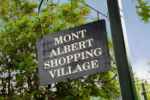The first telephone exchange in Box Hill started in 1899.
Up to about 1910, subscribers in Mont Albert were connected to the old Box Hill manual exchange. Nos. were "Box
Hill xx" (two digits).
Between 1910 and 1930, Mont Albert subscribers were connected to the
Box Hill manual exchange.
The first automatic telephone exchange in Box Hill opened in May
1930, on the NW corner of Station St and Whitehorse Rd, in the large brick building adjacent to the Post Office. Mont Albert
subscribers were connected to this new exchange.
It had the five-digit nos."Wxxxx" which later became six-digit, and served subscribers in a large area which extended
to Union Rd in the west, including Mont Albert.
The original Box Hill Exchange operated with what was known as Strowger pre-2000 electro-mechanical
switching equipment, later modernised to the 2000-type.
The exchange, with five-digit nos. as Wxxxx was a 10,000 line "Branch Exchange", trunked from the main (parent)
exchange at Hawthorn (prefix WA).
Other Branch exchanges connected to Hawthorn included Camberwell (1946), Canterbury, Kew (1961), East Kew, North Balwyn,
Mitcham, Ringwood and Deepdene.
These comprised the "W"" group.
In the late 1950s, six-digit alpha-numeric numbering in the Melbourne metro area was discontinued,
in favour of all-numerical numbers.
Box Hill (WX) became "89".
In the early 1960s, the capacity at Box Hill exchange was increased from 10,000 lines to 20,000 lines, with the introduction
of a second prefix "88".
In later years, six-figure working moved to seven-figure working. Box Hill subscribers with "89" ÷r "88" prefixes became
"890"or "898".
In the 1990s, eight figure working was introduced nationally, with Victorian numbers now starting with "9"". Box
Hill numbers beginning with "890" became "9890"" and "898 "numbers became "9898".
Signs on some older buildings in the Box Hill telephone area still show the original six-digit numbers beginning with
"WX".
Recollections by the Author
Your author's telephone service was
connected to Box Hill exchange as an "88"" number in 1960, which became "898" and then (the present) "9898"" number.
When the author and his family mived into their present home in Mont Albert Rd in 1959, there was no "´ntact" telephone
service available, due to the lack of a vacant copper wire cable pair in the street.
This was remedied within a few weeks when the telephone service in a neighbour's property was cancelled, thus feeing
up a cable pair.
On the author's family taking up occupancy in the property, the remnants of an old telephone connection still existed,
which had been cancelled by the original owners some time in the 1940s.
This was not an underground cable, but a twin coppen open-wire line terminating on two porcelain insulators on the barge-board
on the side of the house. One of these insulators is still in-situ!
The present underground copper wires, wrapped in paper insulation inside lead sheaths, were laid down in the 1930s. At
that time, overhead distribution was being phased out in main roads. These cables survive to the present, carrying live voice
and data traffic, including ASDL+.
In June 1991, the exchange was closed down, and a brand new exchange was cut over in Carrington Rd, using modern stored-program-control
switching technology.

